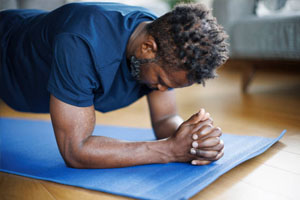Discover the calorie-burning power of cycling for one hour Learn how many calories you can torch during a 60-minute bike ride and make the most of your fitness journey
If you've ever wondered about the calorie-burning potential of cycling for 60 minutes, you're not alone. Cycling is not only a fantastic way to stay fit and active, but it also provides various health benefits. Knowing the number of calories you can burn during an hour of cycling can help you tailor your fitness routine to your specific goals. Let's dive into the details and explore the calorie burn associated with this enjoyable exercise.

Understanding Calories Burned in Cycling
When it comes to cycling, understanding the calories you burn during a ride is essential for tracking your fitness progress and managing your weight. Calories are units of energy, and the number of calories you burn during a cycling session depends on various factors.
These factors include your weight, the intensity and duration of your ride, the type of bicycle you use, and even the terrain. Knowing how to estimate your calorie burn can help you make the most of your cycling workouts and achieve your fitness goals.
One essential concept to understand is that when you cycle, your body expends energy to move you and the bike forward. This energy expenditure is measured in calories. The more intense the activity, the more calories you burn. Therefore, the key to burning more calories while cycling is to increase the intensity of your ride.
Benefits of Cycling for Weight Loss
Cycling is not only a fun and enjoyable way to stay active, but it can also be a highly effective tool for weight loss. Here are some of the key benefits of cycling for shedding those extra pounds:
- Calorie Burn: Cycling is a fantastic cardiovascular exercise that can help you burn a significant number of calories. The more intense your ride, the more calories you'll burn. This calorie deficit is essential for weight loss, as you need to burn more calories than you consume.
- Lower Impact: Unlike high-impact activities like running, cycling is gentle on the joints. This makes it an excellent choice for those who may have joint issues or need a low-impact workout while losing weight.
- Strengthening Muscles: Cycling primarily targets the muscles in your lower body, including your quads, hamstrings, and calves. As you pedal, you'll tone and strengthen these muscle groups, which can boost your metabolism and help you burn more calories even at rest.
- Increased Stamina: Regular cycling can improve your cardiovascular fitness and stamina. You'll find yourself able to take on longer and more challenging rides, further enhancing your weight loss efforts.
- Mood Enhancement: Exercise, including cycling, releases endorphins – the "feel-good" hormones. This can help reduce stress and emotional eating, making it easier to stick to a weight loss plan.
Whether you choose to cycle outdoors or use a stationary bike, cycling can be tailored to your fitness level and goals. It's a versatile and enjoyable way to support your weight loss journey while reaping numerous health benefits.
Calories Burned in Different Types of Cycling
The number of calories you burn while cycling can vary depending on several factors, including your weight, the intensity of your ride, and the type of cycling you choose. Here's a breakdown of estimated calorie burns for different types of cycling:
- Leisurely Cycling: A casual bike ride at a slow pace can burn around 250-350 calories per hour. This is a great way to enjoy the outdoors and get some light exercise.
- Mountain Biking: Riding off-road and tackling challenging terrains can burn a higher amount of calories, usually ranging from 400-700 calories per hour, depending on the intensity.
- Road Cycling: If you're cycling on paved roads at a moderate pace (12-14 mph), you can expect to burn approximately 500-700 calories per hour. Faster speeds will result in even more significant calorie burn.
- Indoor Cycling (Spin Class): High-intensity indoor cycling classes can be incredibly effective for calorie burning. In a 45-minute session, you may torch 500-700 calories or more, depending on your effort level.
- Commuting by Bike: Riding your bike to work or for daily errands can also contribute to calorie burn. On average, commuting at a moderate pace can help you expend 300-500 calories per hour.
Keep in mind that these are approximate values and individual calorie burn can vary. To get a precise idea of your calorie expenditure, consider using a fitness tracker or app. Regardless of the type of cycling you choose, it's a rewarding way to stay active and promote weight loss.
Cycling and Health
Cycling is not only a fun and eco-friendly mode of transportation but also an excellent way to boost your physical and mental health. Regular cycling offers a wide range of health benefits, making it an enjoyable activity that contributes to your overall well-being.
Cardiovascular Health: Cycling is an exceptional cardiovascular workout. It strengthens your heart, reduces the risk of heart diseases, and helps regulate blood pressure. As a result, you can enjoy a healthier heart and improved circulation.
Weight Management: Cycling is an effective way to manage or lose weight. It burns calories, boosts your metabolic rate, and helps shed unwanted pounds. Whether you're cycling for leisure or commuting to work, it can support your weight management goals.
Muscle Tone and Strength: Regular cycling builds muscle tone and enhances muscle strength, particularly in the lower body. It's an excellent way to work your leg muscles and glutes, contributing to a more sculpted physique.
Mental Well-being: Cycling is a great stress-reliever. It reduces anxiety and depression, enhances mood, and fosters mental well-being. The sense of freedom and exploration while cycling can have a positive impact on your mental health.
Joint Health: Cycling is a low-impact exercise, which is gentle on the joints. It's suitable for people of all ages, and it can help improve joint mobility and reduce the risk of conditions like arthritis.
These are just a few of the many health benefits of cycling. Whether you're cycling for pleasure, commuting, or participating in long rides, it's a healthy and enjoyable way to stay fit and improve your overall quality of life.
Frequently Asked Questions about Calorie Burn in Cycling
If you're curious about how many calories you can burn while cycling, you're not alone. It's a common topic of interest for many fitness enthusiasts and those looking to maintain a healthy lifestyle. Here are some frequently asked questions to help you better understand calorie burn in cycling:
Q1: How many calories can I burn in an hour of cycling?
A1: The number of calories burned during cycling depends on various factors, including your weight, cycling intensity, and terrain. On average, a person weighing around 155 pounds can burn approximately 300-600 calories per hour during moderate cycling.
Q2: Is cycling more effective for burning calories than other exercises?
A2: Cycling is a fantastic calorie-burning exercise, but its effectiveness depends on individual preferences and fitness levels. The best exercise is the one you enjoy and can sustain in the long term. Some people may find cycling more enjoyable and, therefore, more effective for them.
Q3: Can I lose weight by cycling every day?
A3: Yes, cycling daily can contribute to weight loss when combined with a healthy diet. The key is to maintain a calorie deficit, which means burning more calories than you consume. Cycling can help you achieve this deficit and support your weight loss goals.
Q4: Are there specific types of cycling that burn more calories?
A4: Intensity plays a crucial role in calorie burn. High-intensity cycling, like mountain biking or cycling at a faster pace, can burn more calories than leisurely rides. Additionally, cycling uphill or against the wind requires more effort and results in higher calorie expenditure.
Q5: What are some tips to maximize calorie burn while cycling?
A5: To maximize calorie burn, you can incorporate interval training, vary your cycling routes, and increase your cycling duration and intensity over time. Staying hydrated and maintaining a balanced diet also play a vital role in optimizing your cycling performance and calorie burn.
These are some of the common questions related to calorie burn in cycling. Keep in mind that individual factors vary, so the number of calories you burn may differ from others. Nonetheless, cycling is an enjoyable way to stay active and maintain a healthy lifestyle.










